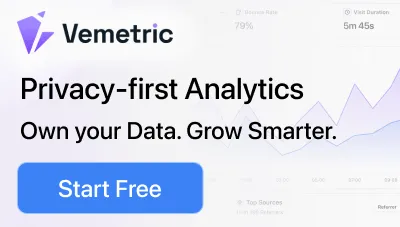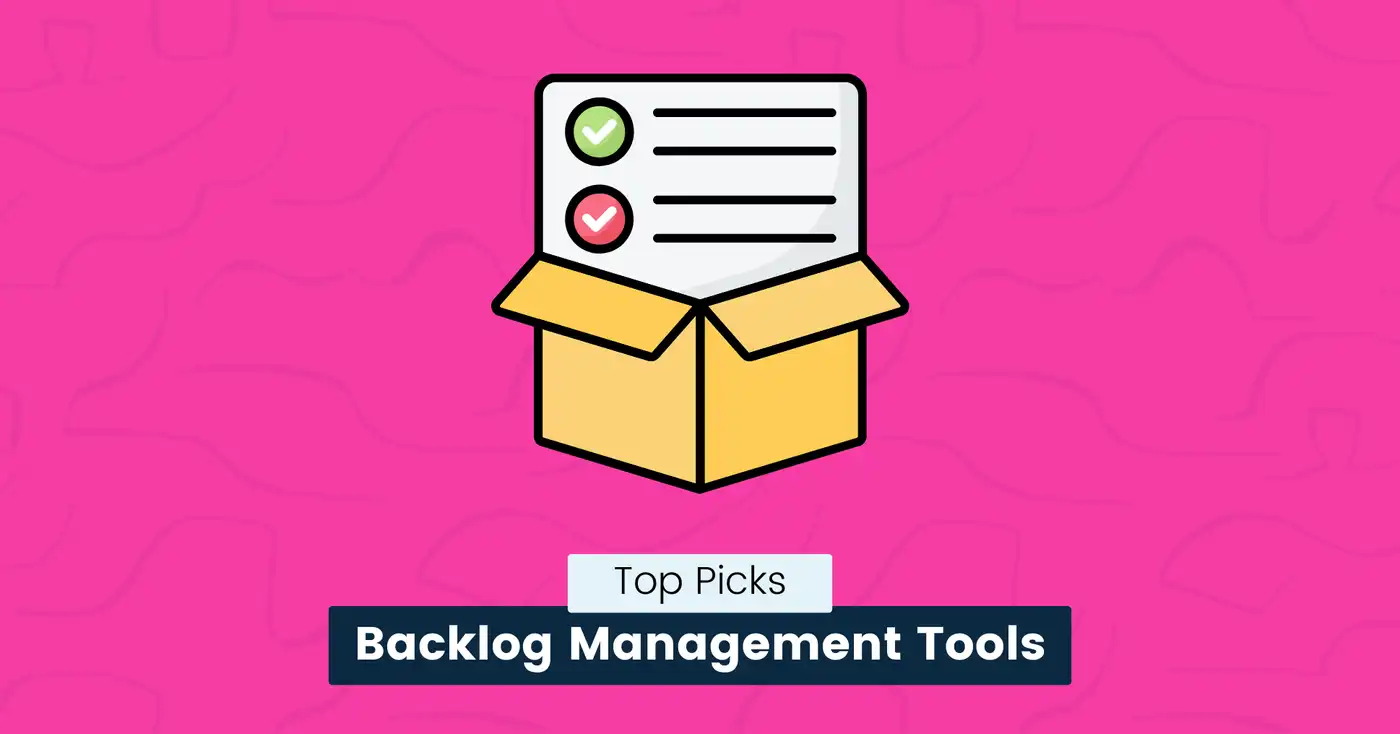
Top 8 Backlog Management Tools for Developers Productivity (2025)
Software developers need to keep up with the never-ending list of tasks while staying focused and efficient.
Managing a growing backlog can be difficult without a proper system in place.
Responsibilities and assignments pile up and you spend more time sorting through the mess than developing great solutions.
This results in unclear priorities, wasted time, and delays that can cause one to lose track of what’s important.
That’s why you need an effective solution to avoid these issues and stay organized.
This guide will help you choose the best backlog management tool to help you keep your projects on schedule.
Let’s get started.
What Are Backlog Management Tools?
Backlog management tools are software solutions that help teams organize, prioritize, and track tasks.
They allow you to create a digital to-do list that is specifically created for project management and works for everyone on your team.
For example, a developer’s backlog could include tasks like feature development, bug fixes, or enhancements.
You can use a backlog tool to clearly communicate to your team what needs to be done, who is responsible for each task, and when things are due.
This helps keep everyone on the same page and avoid misunderstandings.
Some key benefits offered by backlog management tools include:
- Visualization: Kanban boards and lists allow you to view everything at a glance. You can see details such as works in progress, completed and pending tasks.
- Task Prioritization: Backlog tools let you categorize tasks according to priority. For example, a critical bug may be marked as a high priority to address it before less urgent activities. This way, you can spend more time coding and less time worrying about workload management.
- Collaboration: Software development teams can easily collaborate using comments, file sharing, or tagging features.
- Custom Workflows: You can organize the backlog by setting up custom workflows with fields, labels, and tags like to-do, in-progress, and done.
- Deadline Tracking: Most tools include due dates or deadline tracking, helping teams stay on schedule. If priorities change, you can easily rearrange the backlog to avoid last-minute sprints.
- Integrations: Connect to tools you already use like code repositories, messaging apps, or project management tools.
snappify will help you to create
stunning presentations and videos.
7 Best Backlog Management Tools
The right backlog management tool can save time and improve project outcomes.
Here are some of the best tools every developer should know:
Jira
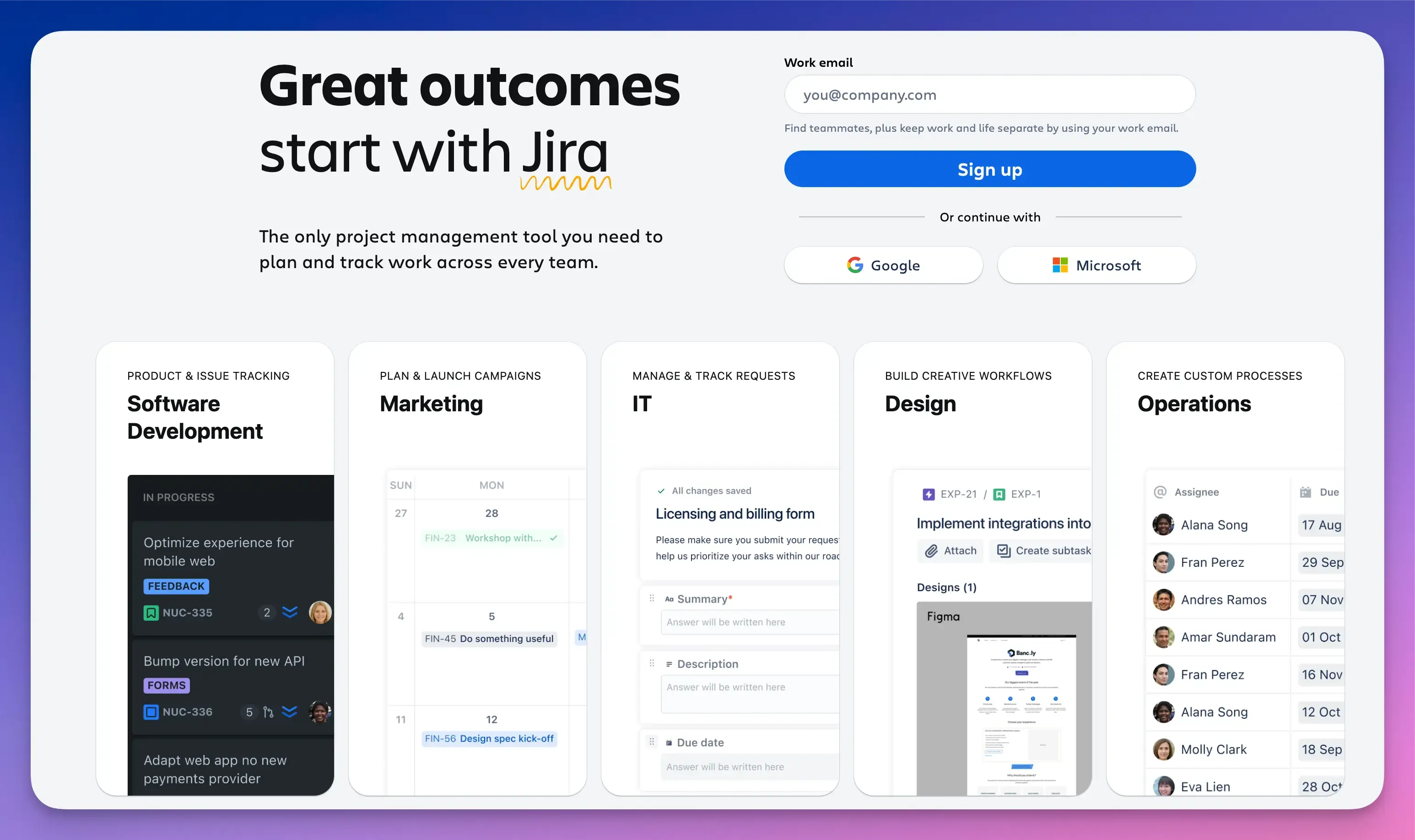
Jira is one of the best tools for software project management and issue tracking.
It supports Agile methodologies, making it ideal for managing software development workflows.
Jira provides a detailed backlog for Agile teams to plan, track, and prioritize tasks such as user stories, bugs, or technical improvements.
Its industry-wide adoption and comprehensive features make it a go-to choice for sprint planning and progress monitoring at every stage of product development.
Key Features:
- Customizable workflows to manage project timelines and dependencies.
- Agile tools like Kanban and Scrum boards for visual progress tracking.
- Automation features for workflow approvals and issue triggers.
- Filter the backlog by criteria like priority, status, or person assigned.
- Advanced reporting and analytics with customizable dashboards.
- Built-in templates for product backlog, bug tracking, and more.
- Integration with developer tools and third-party apps like GitHub, Bitbucket, and Slack.
Pros:
- Agile project management with powerful issue-tracking.
- Strong integrations with Atlassian products.
Cons:
- Not suitable for small projects.
- Pricing can be expensive for larger teams.
Pricing:
- Free plan available.
- Pricing starts from $7.53 per user per month.
Backlog

Backlog, a Nulab product, provides a centralized platform for tracking backlog items, bugs, and projects.
It is popular among software developers because it integrates project management, version control, and bug tracking.
Backlog supports Agile processes and includes tools such as Gantt charts and Kanban boards, making it a flexible solution for work management and collaboration.
Key Features:
- Gantt charts and burndown charts for progress monitoring.
- Bug and issue tracking with task hierarchy, custom categories, versions, and milestones.
- Drag-and-drop file sharing and wikis for project documentation.
- Integration with GitHub, Slack, Jenkins, Microsoft Copilot, and Redmine.
Pros:
- Built-in Git and SVN repositories for easy code management.
- Great for managing Agile workflows.
- Collaborative development and bug tracking.
Cons:
- The interface may be less user-friendly compared to competitors.
- Limited customization options.
Pricing:
- Free plan available.
- Pricing starts from $35 per month for up to 30 users.
Monday
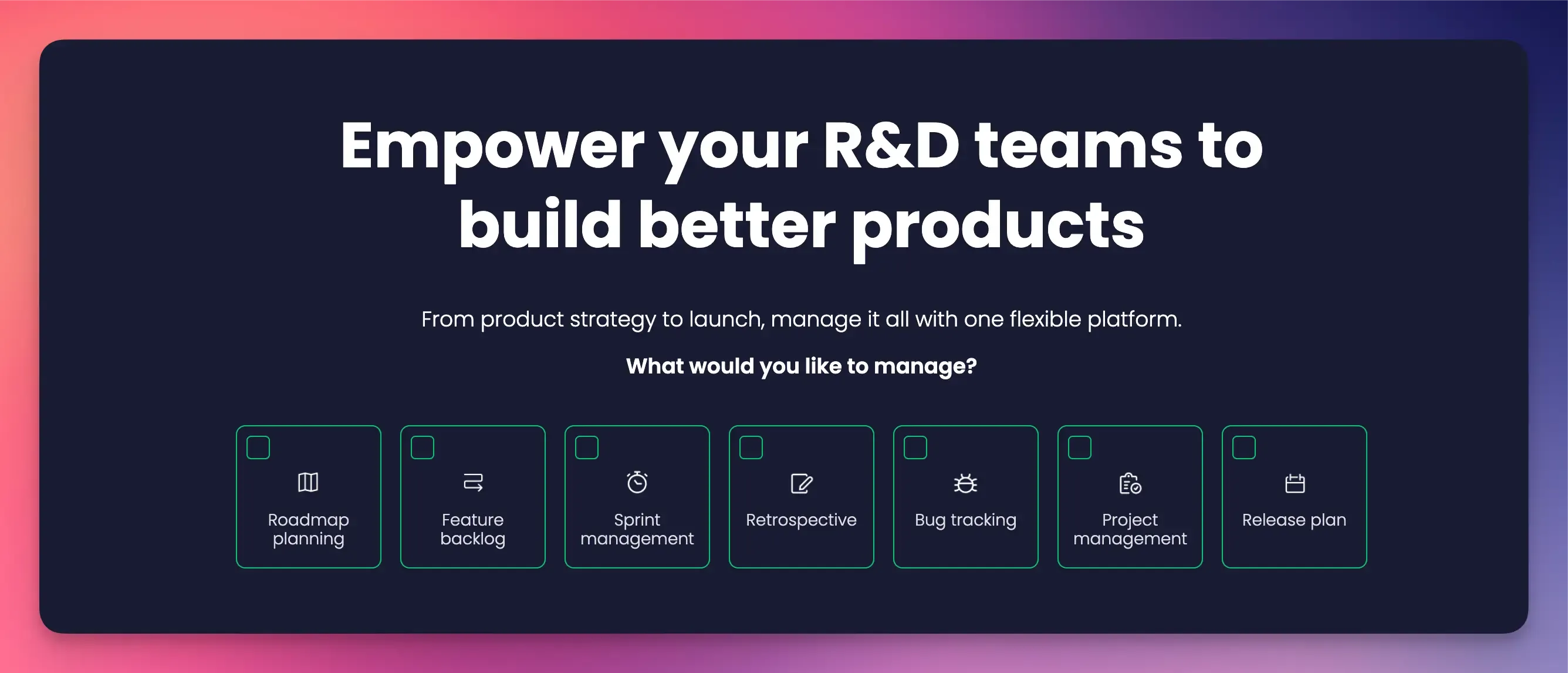
Monday is universal project management and collaboration software that offers customizable workflows to help teams organize, track, and complete tasks.
Its visual interface and backlog features make it a great choice for product development and management processes.
Key Features:
- Kanban-style boards and project timelines for backlog visualization.
- Customizable boards with columns for status, priority, and deadlines.
- Create road maps for bug tracking, sprint planning, and backlogs.
- Automation for repetitive tasks like status updates or reminders.
- Integration with tools like Zoom, Jira, GitHub, Microsoft Teams, Mailchimp, and Slack.
Pros:
- Supports multiple ways for visualizing backlogs.
- Centralized task management and file sharing.
- Strong automation capabilities.
Cons:
- Advanced features are limited to higher pricing tiers.
- Customization options might confuse new users.
Pricing:
- Free trial available.
- It costs $9 per user per month.
Trello
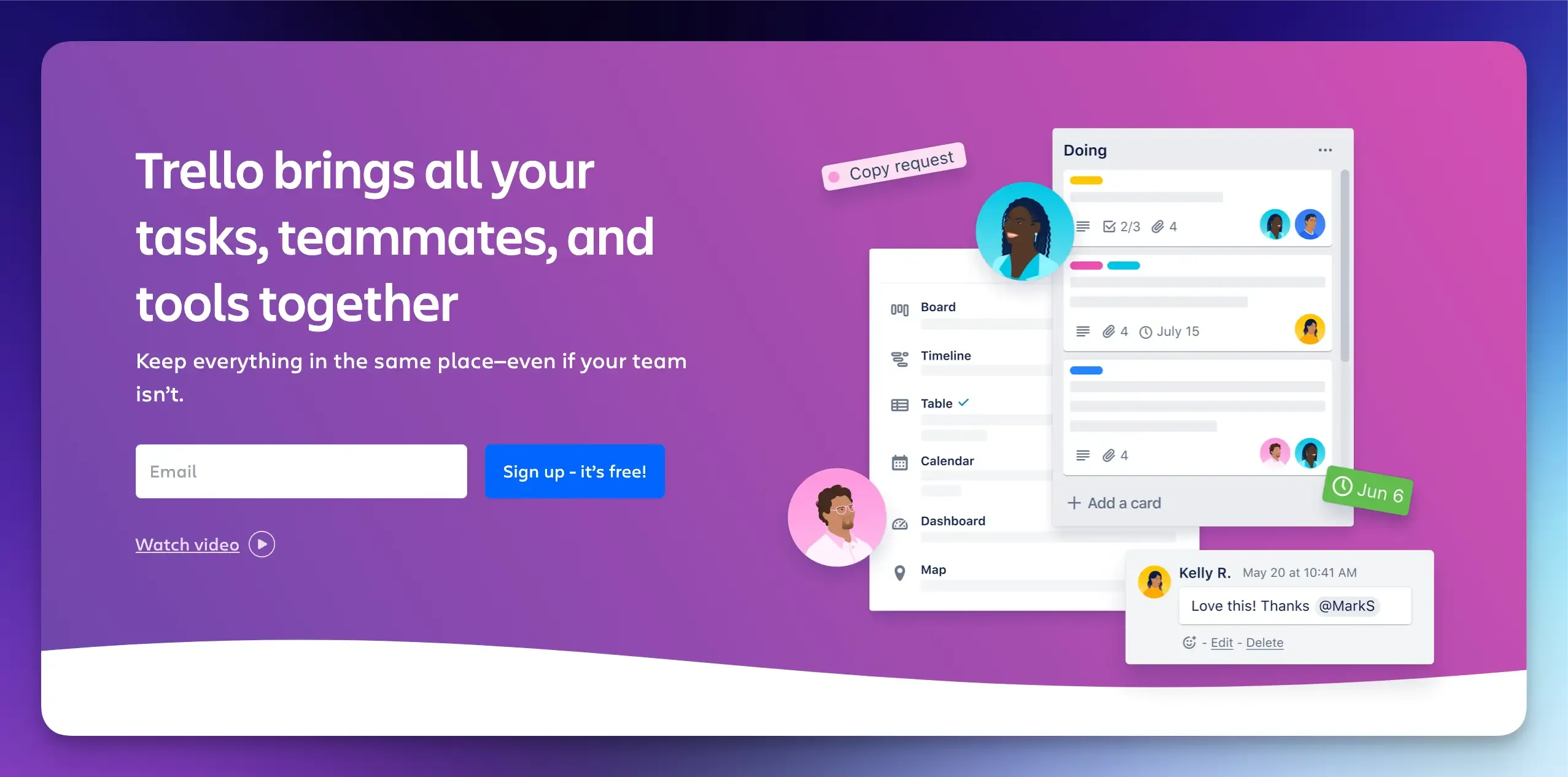
Trello is another great tool that is widely used for backlog management because of its simplicity and ease of use.
It offers a visual drag-and-drop interface and uses a Kanban-style board system to simplify complex workflows.
It allows users to create boards, lists, and cards to represent projects and individual tasks.
Key Features:
- Visual Kanban boards for easy task management.
- Customizable lists and tags to fit specific workflows.
- Categorize and prioritize tasks with colored labels, descriptions, checklists, and due dates.
- Add comments, tag team members, and share files within cards.
- Use pre-built templates for Agile backlog management.
- Integration with apps like Jira, Slack, Google Drive, and GitHub.
Pros:
- Simple and easy-to-use card-based system.
- Great for smaller teams or individual developers.
- Power-ups to extend functionality.
Cons:
- Limited advanced features compared to other tools.
- Not ideal for complex projects.
Pricing:
- Free plan available.
- It costs $5 per user per month.
ClickUp
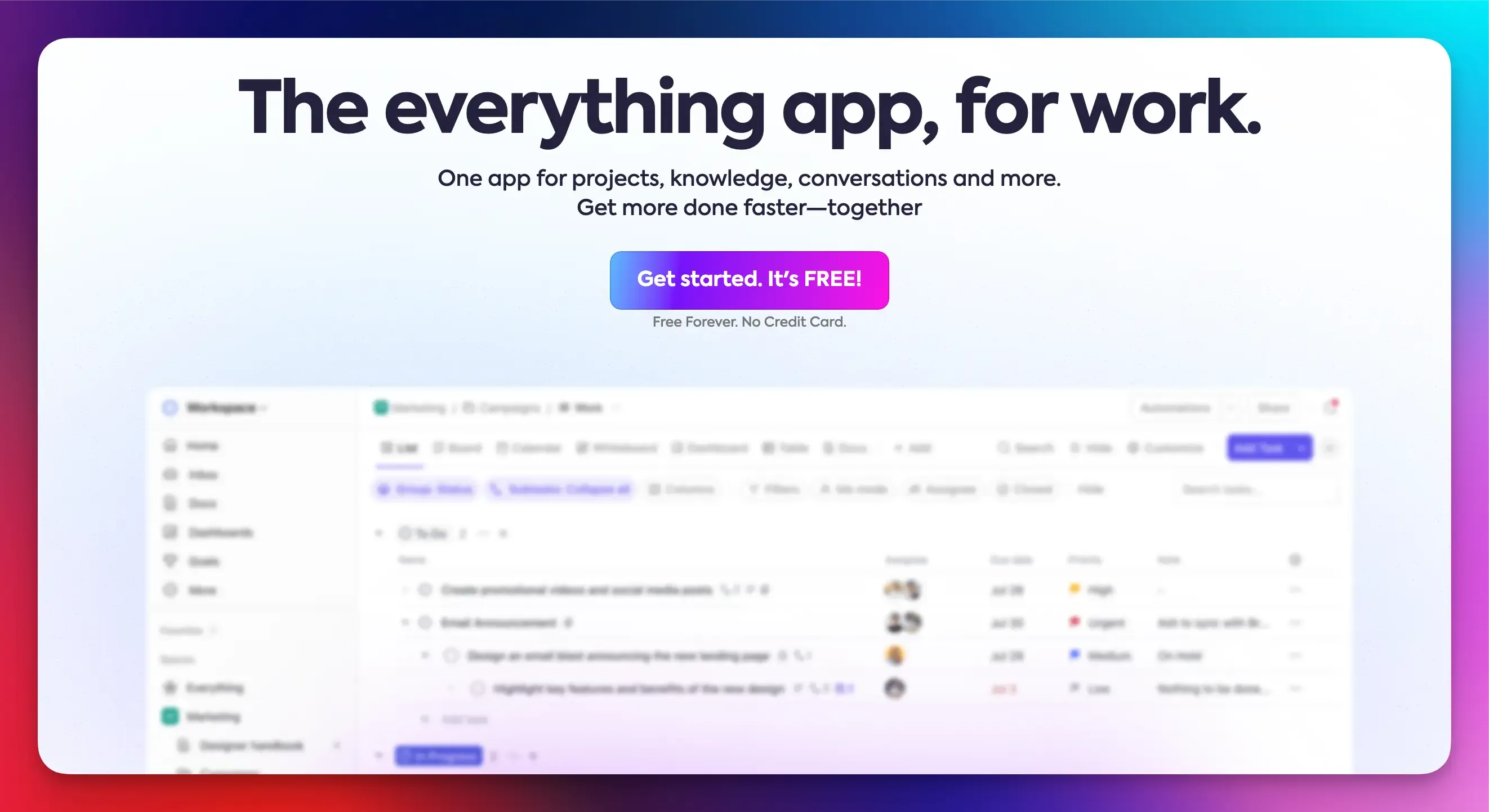
ClickUp is an all-in-one project management and productivity tool designed to help teams handle tasks, goals, documents, and collaboration.
It offers features to support a wide range of workflows, including Agile, Scrum, and traditional project management.
Key Features:
- Offers multiple views: list, dashboards, Kanban, Gantt charts, and calendars.
- Built-in time tracking and goal-setting features.
- Assign priority levels to backlog tasks.
- Use mind maps to break down ideas and draw connections between tasks.
- Automation templates for routine work.
- Integration with GitHub, Slack, Google Drive, and Microsoft Teams.
Pros:
- Highly flexible with lots of customization options.
- Provides detailed analytics and tracking for backlog progress.
- It offers a free plan with a wide range of features.
Cons:
- There is a steeper learning curve due to the number of features.
- Can feel confusing for smaller projects.
Pricing:
- Free plan available.
- Pricing starts from $7 per user per month.
Craft.io
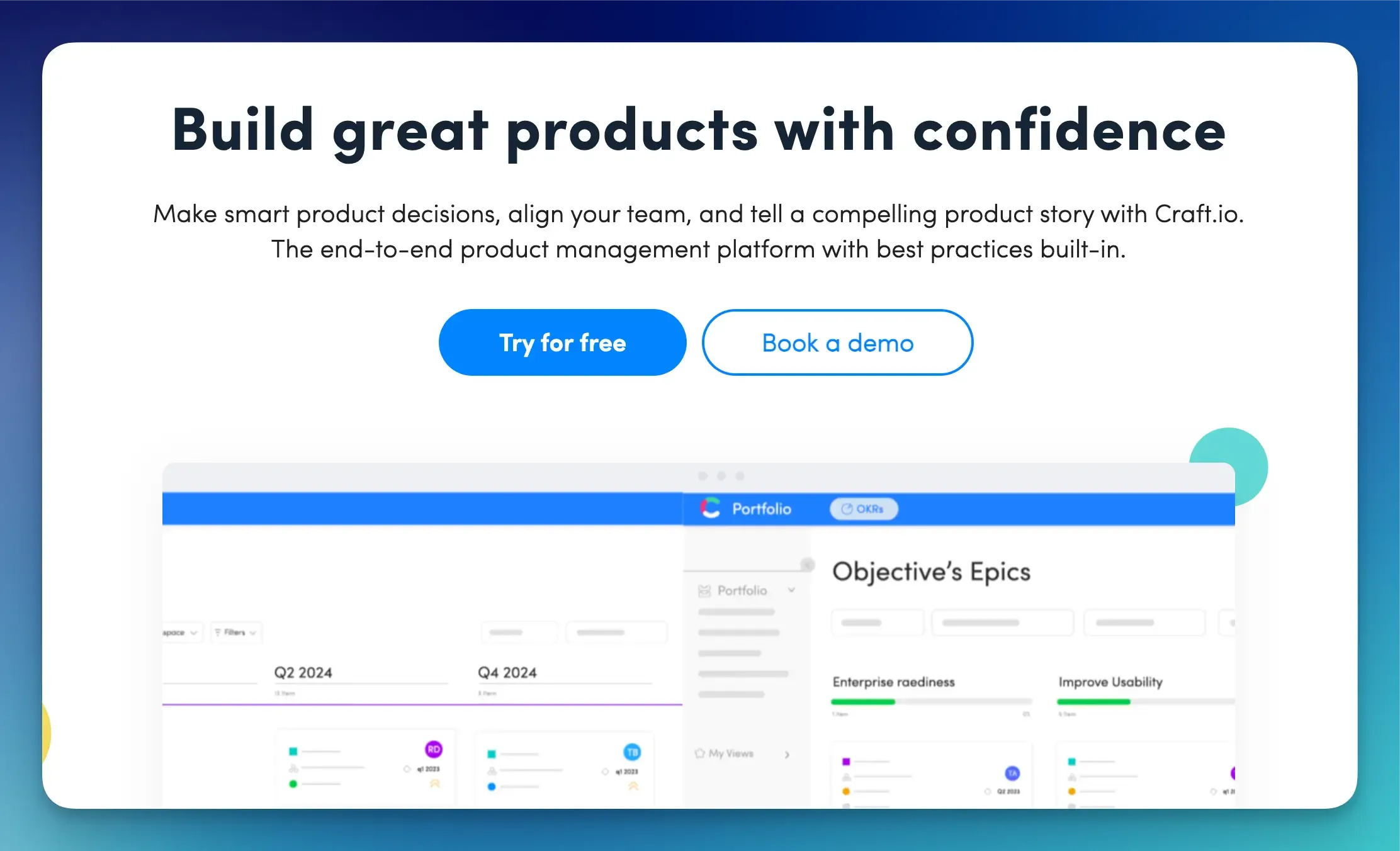
Craft.io is an end-to-end product management software that helps you manage the complete product lifecycle from planning to execution.
It offers powerful features for roadmap planning, prioritizing features, and managing backlogs.
You can organize your product backlog using a logical hierarchy including all the features and view backlog items to understand requirements.
Key Features:
- Use built-in prioritization best practices and custom prioritization models to rank backlog tasks.
- Create persona cards to associate tasks with user stories.
- Dashboards and analytics tools to track and analyze progress.
- Integration with tools like Jira, GitHub, Slack, Microsoft Teams, and Google Docs.
Pros:
- Great for linking backlog tasks to product goals.
- Integrates customer feedback directly into the backlog for prioritization.
Cons:
- Can be expensive for smaller teams.
- Steep learning curve for beginners.
Pricing:
- Free plan available.
- It costs $19 per editor per month.
Linear
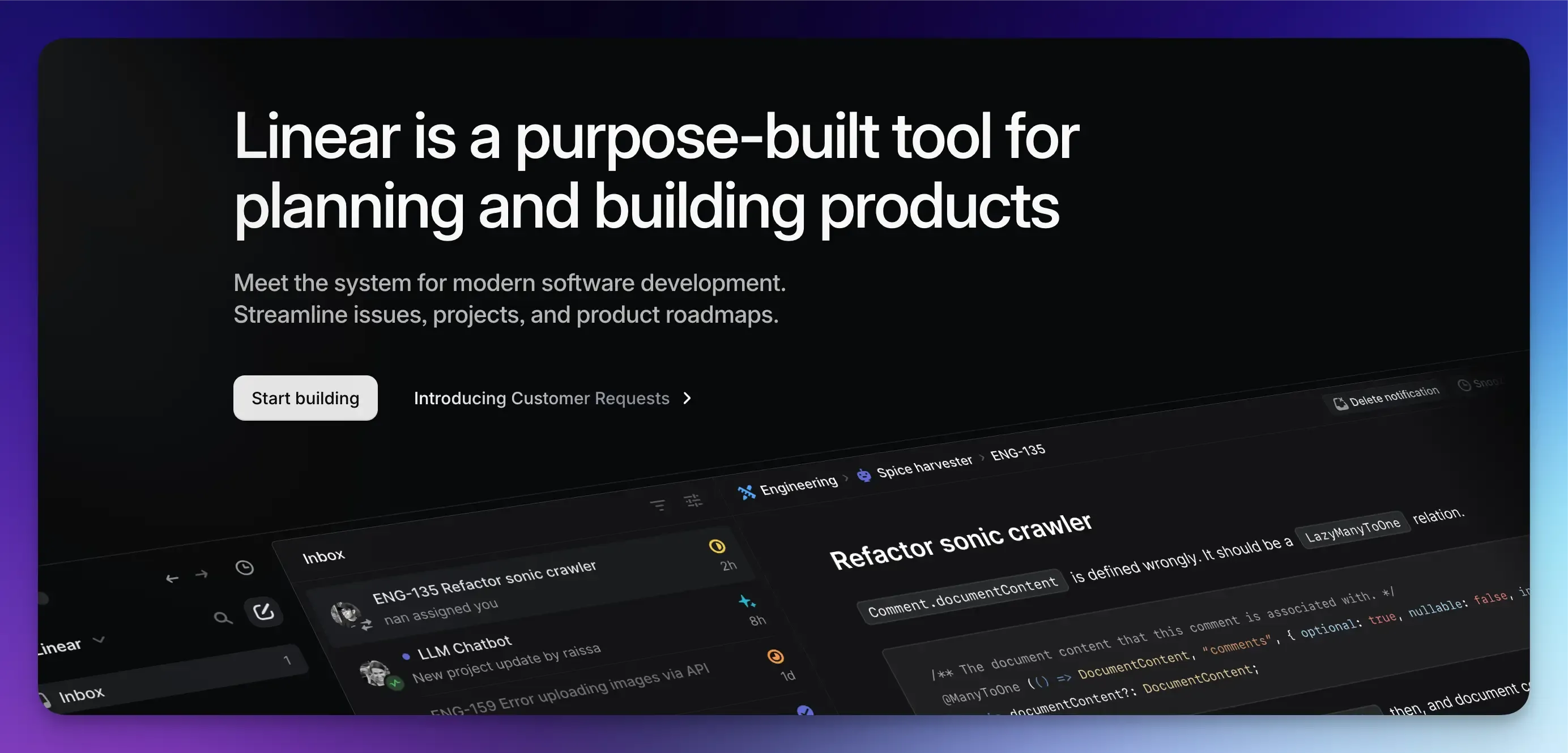
Linear is an issue-tracking and project-management tool for modern software development.
Its lightweight structure, fast performance, and powerful features make it an effective backlog management tool for Agile development teams.
Key Features:
- Customizable boards or lists to view backlogs.
- Priority tags for better organization.
- Real-time updates and collaboration tools.
- Auto-closing and auto-archiving features to keep the backlog clean.
- Create bug reports, feature requests, and other tasks in seconds.
- Integration with GitHub and GitLab to automate pull requests.
Pros:
- Fast and clean interface for task management.
- Focused on developer productivity with no distractions and regular backlog cleanup.
- Provides time-saving keyboard shortcuts.
Cons:
- Not good for non-technical users.
- Limited customization and reporting options.
Pricing:
- Free plan available.
- It costs $8 per user per month.
HelixPlan
HelixPlan is a real-time planning tool developed by Perforce.
It provides a unified view of projects to enhance team collaboration and assist developers in tracking work, time, and overall progress.
It integrates backlog management with Agile, Gantt, and Lean planning, enabling prompt decision-making and effective dependency management.
Key Features:
- Monitor tasks, time allocation, and progress instantly.
- Prioritize backlog items using customizable views.
- Import data from Excel, MS Project, and other formats to maintain consistency.
- Capacity planning for balanced task distribution.
- Advanced search and filters to locate specific backlog items.
- Customize automation and integrations with a powerful GraphQL API.
Pros:
- Best for enterprise-scale projects.
- Multiple planning methods to suit team preferences.
- Dashboard with real-time data.
Cons:
- Features may be complicated for new users.
- Not suitable for small teams.
Pricing:
Available upon request.
snappify will help you to create
stunning presentations and videos.
Final Words
Backlog management tools keep projects running smoothly and allow the whole team to work together without stress.
The tools listed above make handling tasks simpler and more manageable, whether a small feature update or a large project.
Each tool offers unique features that can help you become more productive.
Choose one based on your preferences and project requirements and deliver quality software products faster.
FAQs:
How do you maintain a healthy backlog?
To keep the backlog clean and manageable, prioritize tasks regularly, delete old or irrelevant entries, group similar tasks together, and include clear explanations.
What are the different types of backlogs?
The main types of backlogs are:
- Product backlog: High-level features or ideas for the product.
- Sprint backlog: Tasks planned for a specific sprint.
- Release backlog: Tasks related to an upcoming release.
